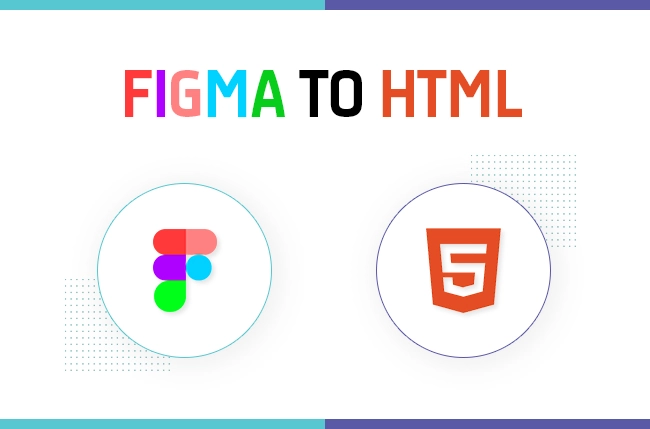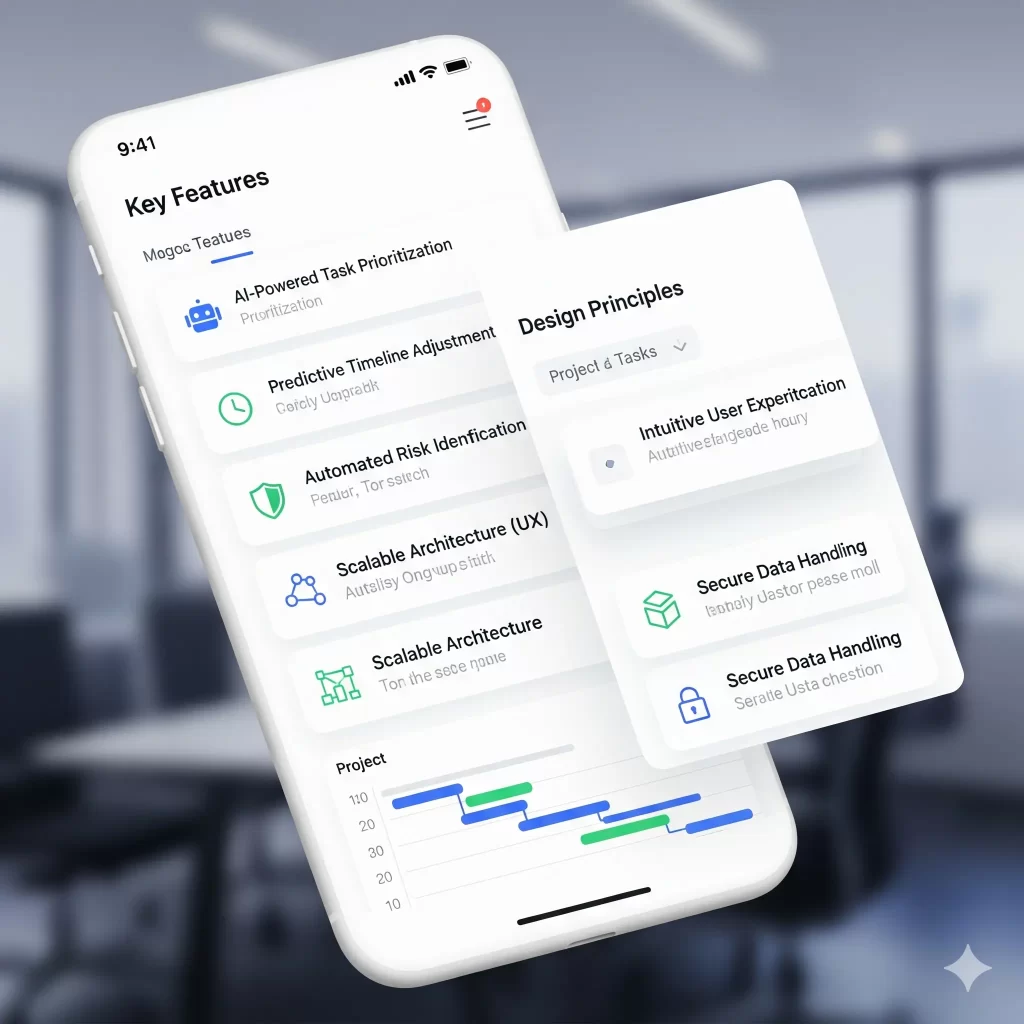Figma to HTML: Convert Designs to Clean HTML Code in a Click – AI Edition

In the modern digital world, the tools we use to design and build websites are just as important as the design itself. Figma, one of the most widely used design platforms today, offers designers the flexibility to create beautiful, high-quality web and app designs. But once a design is complete, the next step is always the same: translating that design into code. This process, known as Figma to HTML conversion, has historically been a manual, tedious, and time-consuming task. However, with the advent of artificial intelligence (AI) tools, this process has become significantly faster, cleaner, and more accurate.
If you’re a designer or developer looking to streamline your workflow, you’ve probably wondered how to automate the transition from Figma to HTML conversion. In this blog post, we’ll explore the challenges involved in this process, how AI can simplify it, and highlight some of the most popular tools that help automate Figma to HTML conversion.
One company that is making strides in this field is Impex Infotech. With their innovative approach to development and AI integration, they have helped clients enhance their web development workflows, including simplifying the Figma to HTML conversion process.
The Challenge of Figma to HTML Conversion
For web developers, translating a static Figma design into a fully functioning website or app can be a daunting task. While Figma excels in creating visually appealing user interfaces (UI) and experiences (UX), it does not natively provide a way to export designs directly into usable HTML code. This means developers often have to spend hours manually coding the layout, structure, and functionality of the design.
In the past, this meant manually recreating the design in HTML, CSS, and JavaScript. Each element had to be carefully adjusted to ensure it matched the design’s pixel-perfect look, while ensuring it was responsive across different devices. Moreover, developers had to pay attention to CSS rules, grids, typography, and alignment, which is time-consuming and prone to human error.
While there are plugins and tools to aid in this process, the code often needed extensive cleanup to make it production-ready. This can be frustrating for both designers and developers, as it disrupts their workflow and consumes valuable time. Fortunately, companies like Impex Infotech are embracing AI tools to reduce the burden of manual Figma to HTML conversion.
How AI Simplifies Figma to HTML Conversion
AI-powered tools are making significant strides in the design-to-code process, allowing designers and developers to bypass the manual coding stage. These AI tools analyze a Figma design and automatically generate clean, semantic HTML code, often with accompanying CSS and media queries for responsive design.
When using AI-driven tools, the process is streamlined:
-
Upload Your Figma Design: Designers simply upload their Figma designs to an AI-powered conversion tool or plugin. The AI scans the design, identifying key elements such as images, text, buttons, forms, and containers.
-
AI-Driven Code Generation: The AI tool then generates the corresponding HTML and CSS code for each of these design elements. It translates the layout, color schemes, fonts, and spacing into structured, web-friendly code.
-
Customizable Output: While the AI-generated code is a great starting point, developers can still customize it further to fit specific frameworks or add advanced interactivity.
-
Download and Deploy: Once the HTML code has been generated, it can be downloaded and directly integrated into a development project. With the design now in HTML form, developers can focus on fine-tuning functionality rather than reinventing the layout.

At Impex Infotech, we leverage AI technologies to automate this process, offering businesses a more efficient way to convert Figma designs to HTML and streamline their entire development pipeline.
Contact UsWhy Should You Use AI for Figma to HTML Conversion?
There are several benefits to using AI to automate the Figma to HTML conversion process, including speed, accuracy, and clean code. Let’s take a closer look at the top reasons why incorporating AI into this workflow is a game-changer for designers and developers.
1. Speed and EfficiencyThe most obvious benefit of using AI for Figma to HTML conversion is speed. AI tools can generate HTML and CSS code in a matter of minutes, which would otherwise take hours if done manually. For designers working under tight deadlines or developers juggling multiple projects, this time-saving aspect is invaluable.
Rather than spending time aligning pixels or recreating grids, AI allows both teams to focus on higher-level tasks like user experience, interactivity, and functionality.
2. AccuracyHuman error is a common issue in manual Figma to HTML conversion. Small inconsistencies in spacing, margins, and font sizes can slip through the cracks. AI tools eliminate these errors by providing a more accurate representation of the design in HTML code.
Since AI tools are designed to interpret design files precisely, the output closely mirrors the Figma design, preserving the pixel-perfect layout and ensuring the design looks as intended across different devices and browsers.
3. Clean and Semantic CodeOne of the critical advantages of AI tools is that they generate clean, semantic HTML code. Clean code is easier to maintain, load, and optimize, and it follows best practices that benefit both SEO and accessibility.
AI-powered Figma to HTML conversion tools automatically structure the HTML code with proper tags, ensuring that it meets modern web standards. By adhering to best practices from the start, you can avoid the headache of manually cleaning up messy or bloated code later on.
4. Responsive DesignCreating a responsive design—one that adapts to different screen sizes and devices—can be a challenge when manually coding. However, many AI tools automatically incorporate responsive CSS media queries when performing Figma to HTML conversion.
This means your design will be mobile-friendly right out of the box, with no need to manually adjust the layout or style for various screen resolutions. This speeds up the development process and ensures that your website works seamlessly on both desktop and mobile devices.
5. Better Collaboration Between Designers and DevelopersTraditionally, the Figma to HTML conversion process has required constant back-and-forth communication between designers and developers. With AI tools, this collaboration is streamlined, as designers can export HTML code directly from Figma, while developers can quickly refine it according to their needs.
This alignment speeds up the entire development cycle, reduces miscommunications, and enhances the overall workflow for teams working in tandem on a project.
Popular AI Tools for Figma to HTML Conversion
Several AI tools are available to help automate the Figma to HTML conversion process. These tools vary in terms of functionality, ease of use, and pricing, but all of them aim to simplify and speed up the design-to-development workflow.
1. Builder.ioBuilder.io is a popular tool for Figma to HTML conversion. This platform allows you to visually design and export clean HTML, CSS, and JavaScript from your Figma design. Builder.io
automatically detects the layout and structure of your design and translates it into code that is ready for deployment.
2. AnimaAnima is another popular tool that allows for Figma to HTML conversion. It offers more flexibility by letting designers export not only HTML and CSS but also React and Vue.js code. Anima is great for developers who need to integrate designs into modern web applications and frameworks.
3. Figma to CodeAs its name suggests, Figma to Code focuses on translating Figma designs into HTML, CSS, and React code. It’s an easy-to-use tool that works well for simple projects, providing clean and structured code with minimal effort.
4. SupernovaSupernova provides a robust set of tools for converting Figma designs to HTML, including components that developers can reuse across projects. Supernova is ideal for teams working on design systems and complex websites that require flexibility and scalability.
For More Info visit : Impex Infotech
Follow Us :
Recent Posts
Cloudflare Down LIVE: Massive Global Outage Disrupts ChatGPT, X, and Perplexity — What It Means for the Future of the Internet
Cloudflare Down LIVE: Massive Global Outage Disrupts ChatGPT, X, and Perplexity — What It Means for the Future of the...
Read MoreMobile App Design for AI Project Management Tools: Complete Guide 2025
Mobile App Design for AI Project Management Tools: Complete Guide 2025 Table of Contents 1. Introduction to AI Project Management...
Read MoreIT Companies in Rajkot: The Powerhouse Driving Digital Transformation
IT Companies in Rajkot: The Powerhouse Driving Digital Transformation Table of Contents 1. Impex Infotech and the Growth of IT...
Read More



